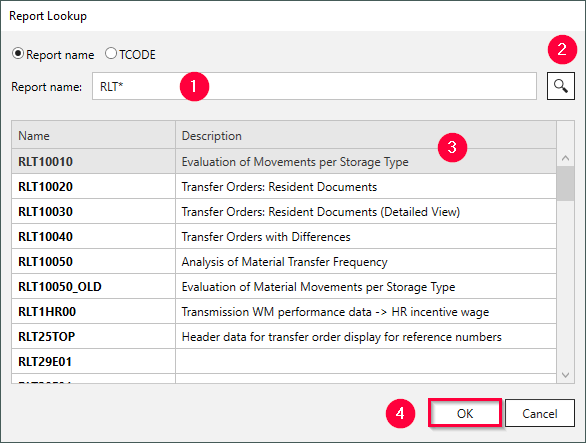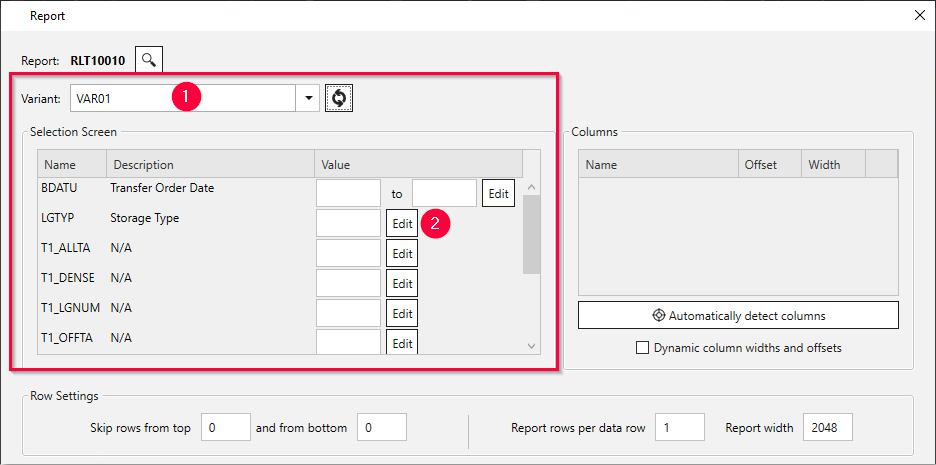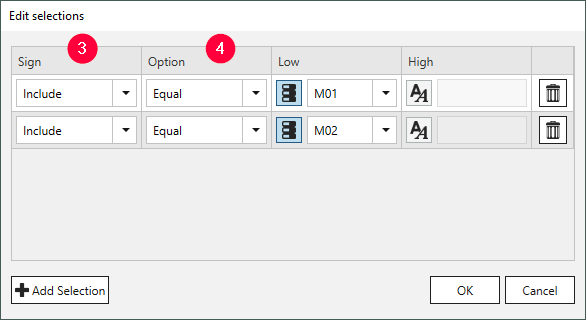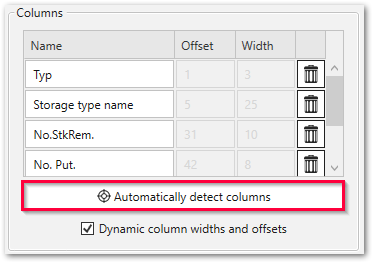The following section shows how to use the Report component.
Look up a Report or Transaction #
- In the main window of the component click [Search] (
 icon). The window “Report Lookup” opens.
icon). The window “Report Lookup” opens. - Enter the name of a report in the field Report Name (1). Use wildcards (*) if needed.
Alternatively you can search for SAP Transaction Codes by selecting TCODE.
In some cases the report can’t be determined based on TCODE.
You can check the report name of a TCODE using the SAP GUI menu System > Status….

- Click [Search] (2) and select the report of your choice from the displayed list (3).
- Click [OK] (4) to confirm.
The application now returns to the main window of the component.
Variants and Selections #
- Choose a variant from the drop-down-list Variant (1).

- Choose a selection criterion you want to change or dynamize from the list in the section Selection Screen (2).
- Click the [Edit] button next to the selection you want to edit. The window “Edit Selection” opens.

- Choose if the selection is to be included or excluded (3) from the extracted data.
- Select an operator (Equal, GreaterThan, etc.) from the Option drop-down list (4).
Tip: Use the In operator when mapping list parameters to selections. - Enter static values in the respective Low and High fields or assign runtime parameters. The High field is active for input when the between or not between operator is selected.
- Optional: click [Add Selection] (5) to add conditions.
- Click [OK] (6) to confirm the selections.
Note: For more information on variants and selections, see Variants and Selections.
Define Report Columns #
- If your report has varying column widths, activate Dynamic column widths and offsets. The column widths and offsets are then adjusted dynamically at report runtime.
- Click [Automatically detect columns] to execute the report based on the selected variant or selections and detect columns automatically.

- Click [Load Preview] to display the rows in the preview screen.
- Check if the automatically detected columns are accurate. When automatic column detection is not possible, the report’s column names, widths and offsets must be set manually, see Define Columns manually.
Note: For more information on how to define report columns automatically and manually, see Define Columns.
Example #
The following example shows how to set up a simple report extraction:
- Look up report RLT10010
- Select variant VAR01
- Load a live preview
- Remove the header (skip the first 7 rows)
- Automatically detect columns
- Save the extraction

Note: Check the General Settings before running an extraction.